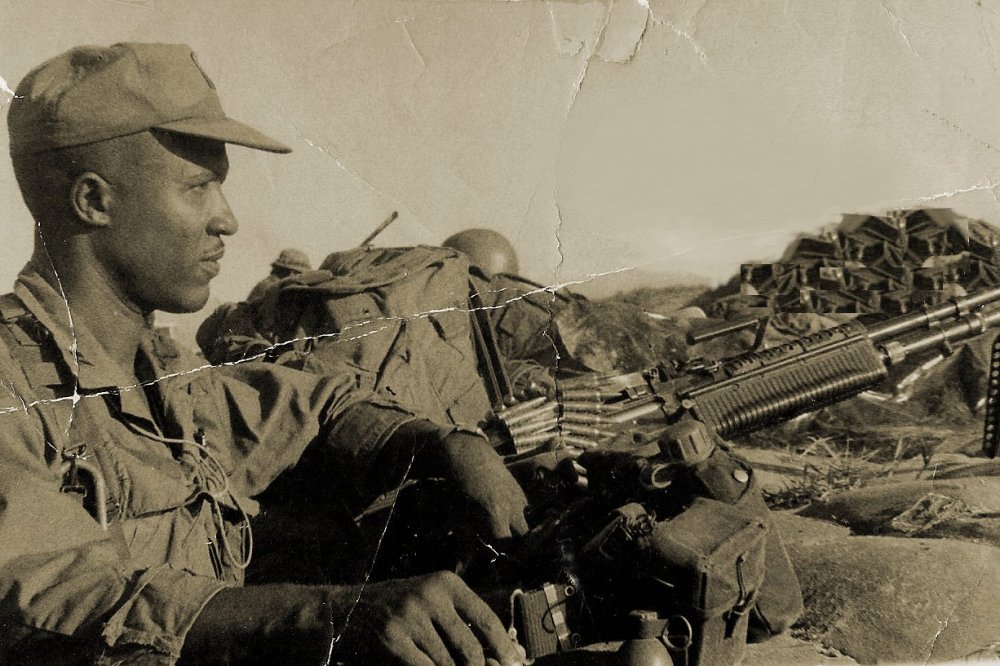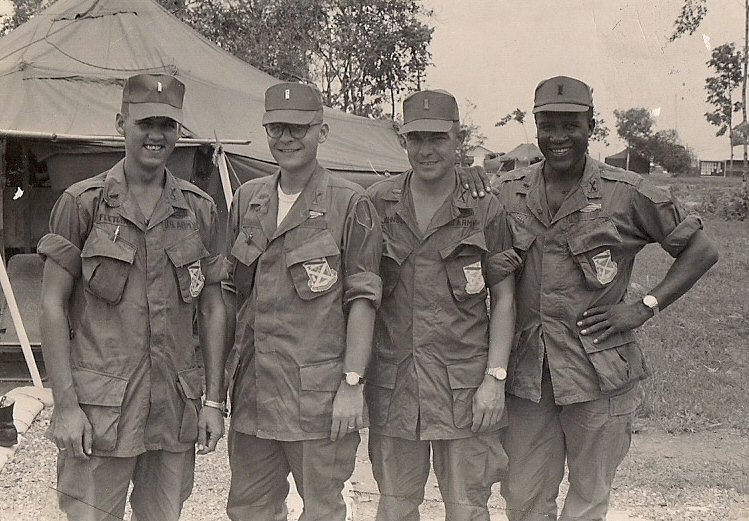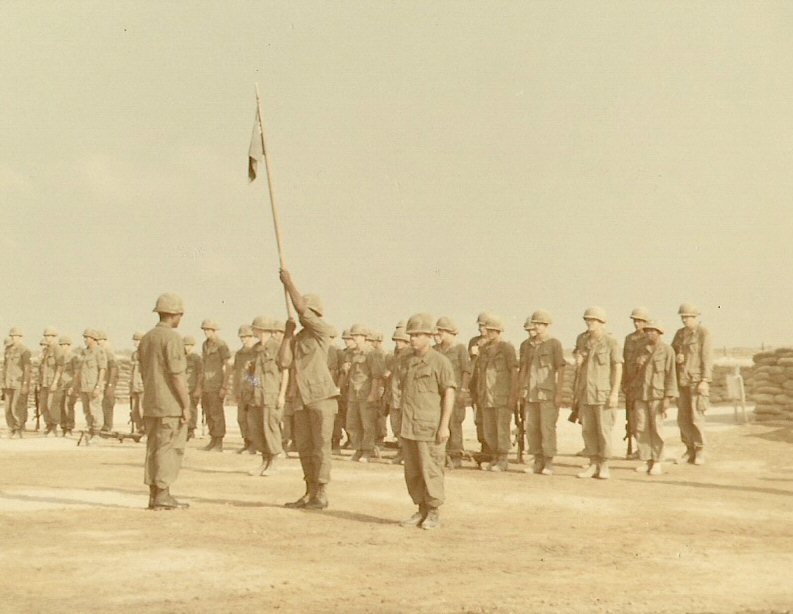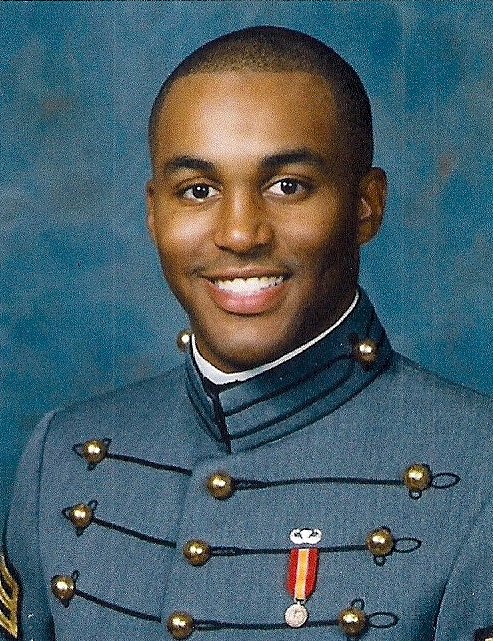Wolfhound Company Commanders II: Captain Frank Smith
by Howard Landon McAllister
The noncommissioned officers of the United States Army have been described in various ways. One of the best-known terms is "Backbone of the Army." Their contribution to the education of the officers who rise to greatness is well known. Some of them become commissioned officers and are superlative combat leaders. Frank Smith is among them. He commanded Company B of the Second Wolfhounds in 1969 and 1970.

Infantrymen are proud of their identity with their units, and the process is filled with complex relationships. Uniformity of Army training, and the curious and indefinable qualities that combine to form unit spirit are blended in ways that make some units better than others in the same battalions and divisions. The values that go into this mixture were examined in detail many years ago by Colonel Mike Malone in his book, Small Unit Leadership. Some of these principles are carried from one unit to another and from one division to another by the professional soldiers who supply the courage, skill and brainpower to produce successful combat infantry units. Captain Frank Smith is one on the officers who contributed to this process.

Frank Smith came to the Wolfhounds with years of experience in infantry units and a quality that instantly saves lives in wartime--previous combat experience. He had served as a platoon leader in the 18th Infantry in one of the Army's proudest divisions, the First Infantry Division, or the "Big Red One," as that division's members like to style themselves.

He became the commander of Company B in the Second Wolfhounds at a turbulent time when combat losses lent even more value to his experience and leadership. No finer tribute to his abilities could be found than one from First Lieutenant James Anderson, who was an artillery officer and forward observer assigned to Company B at the time.
In his own memoirs, Anderson wrote a riveting account of Frank Smith in command, when he described an occasion under enemy fire in December 1969. "You stay with the bird; I'm gonna get down with the troops," Smith told him. Anderson decided he was going with him. Later, in a tribute to Smith's leadership, he put it like this:
"In less than four months I had learned to trust Frank Smith with my life. From day one, he had treated me as a professional. In August, I had been green as a gourd, but with Frank's guidance, I had survived and grown as a person and as a soldier. I don't know if ours was the normal relationship between company commanders and forward observers, but it worked for us."
That is leadership.
Frank Smith commanded Company B through a harrowing period marked with frequent bloody clashes with the enemy along the Cambodian border and the Vam Co Dong River. His company worked along the canals near the abandoned sugar mill dating from French colonial days, and periodically maintained the dangerous outpost near the village of Phuoc Luu, a short distance from the Cambodian border. Through it all, he was a steady, tireless leader--sometimes almost a father figure for his men, and always a commander who worked hard to preserve their lives in an environment that did not tolerate careless mistakes.
Lieutenant Anderson described Smith this way:
"Frank was all soldier. He stood about five feet ten inches tall. He weighed about 150 pounds, with the slim hips and muscular legs of a running back. For his overall size and weight, he had a broad chest and powerful shoulders. Even when he stood completely erect, his shoulders seemed to hunch forward slightly as if ready to take on anything. His soft voice and even temper belied his inner strength."
Perhaps the finest tribute to his leadership in the Second Wolfhounds did not occur until after he had left the battalion to come home. On April 2, soon after his departure, his successor, Captain Ed Criswell led Company B into the Renegade Woods to rescue a pinned-down Company C, which had lost most of its leaders. In a fierce firefight in dense vegetation, the Wolfhounds cleared out the enemy. This battle is described elsewhere in Tales of the Wolfhounds, but it should be noted that the officers and men of Company B were the key to that victory. Frank Smith trained those men.

Still later in the war, Company B was the first company of the Second Wolfhounds to land on Cambodian soil in an effort to root out and destroy an enemy that had previously used the border as a defensive shield. That unit continued to hold the esteem of the battalion commanders as the toughest and most reliable company in the battalion. And the unit's training continued to pay off in lower casualty rates, even with a higher rate in number of contacts with the enemy. And that is the bottom line in the infantry--maintaining high combat effectiveness while keeping casualties to a minimum.
The Vietnam War was the last warfare engaged in by the United States Army using draftees. Conscripted soldiery requires leadership of a special kind, something unknown in the all-volunteer force of today's Army. The combination of skills brought by Captain Frank Smith to his company is still reflected in the lives of old former soldiers who made it home to resume their lives after the war.
When he returned to the United States, Smith served at Fort Benning, still doing what he did best--teaching infantrymen the skills of their craft. A favorite photo from that time shows him standing in the rain, wearing the shining striped helmet liner of the Infantry School.
Frank Smith retired long ago, but his contributions to the Army did not end. His son Eric Smith retired as a colonel, and the Smith descendants still serve. The current representative of the family is his grandson, Captain Collin Avery Smith, pictured to the right as a West Point Cadet, some years ago (photo property of Frank Smith).
Copyright 2009 by Howard Landon McAllister
